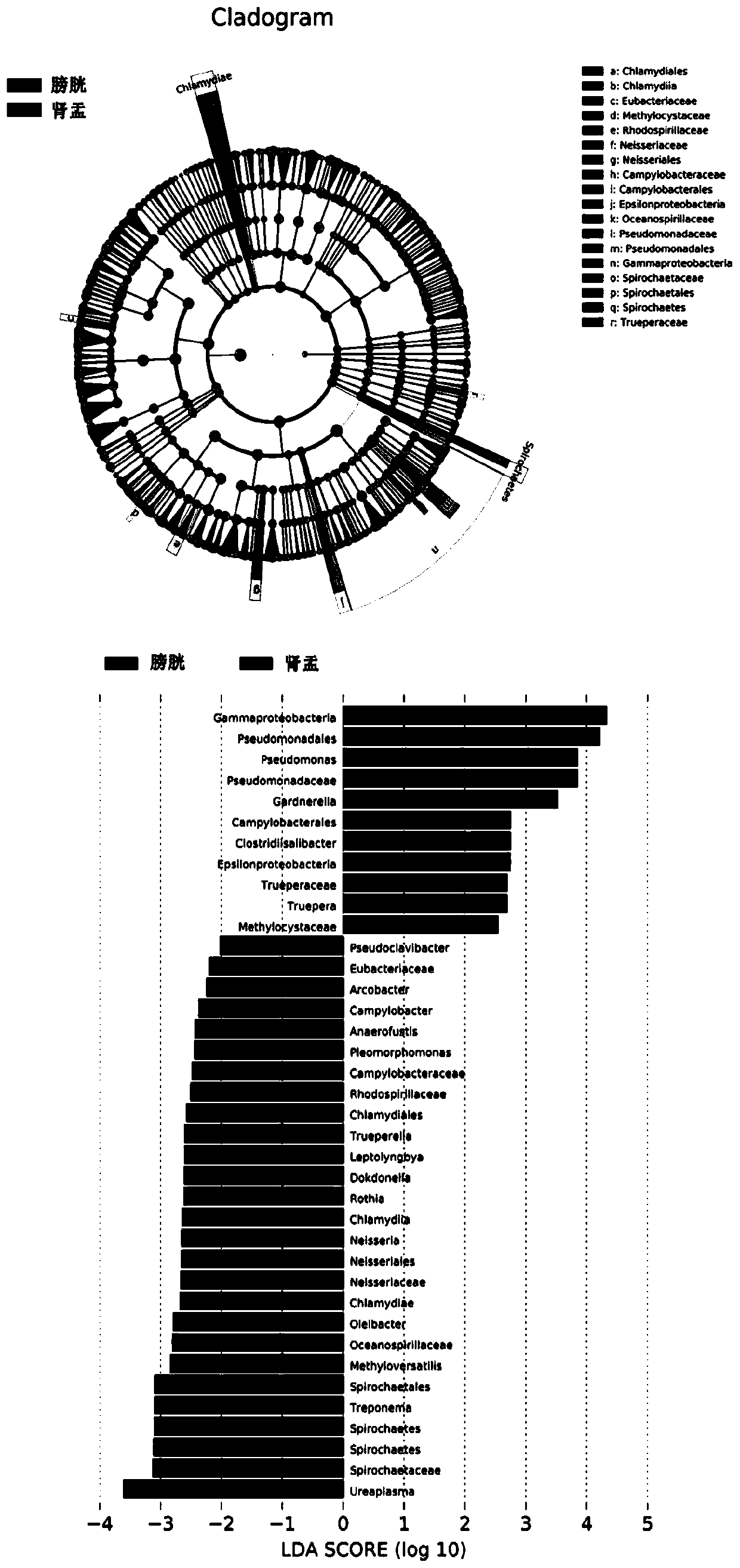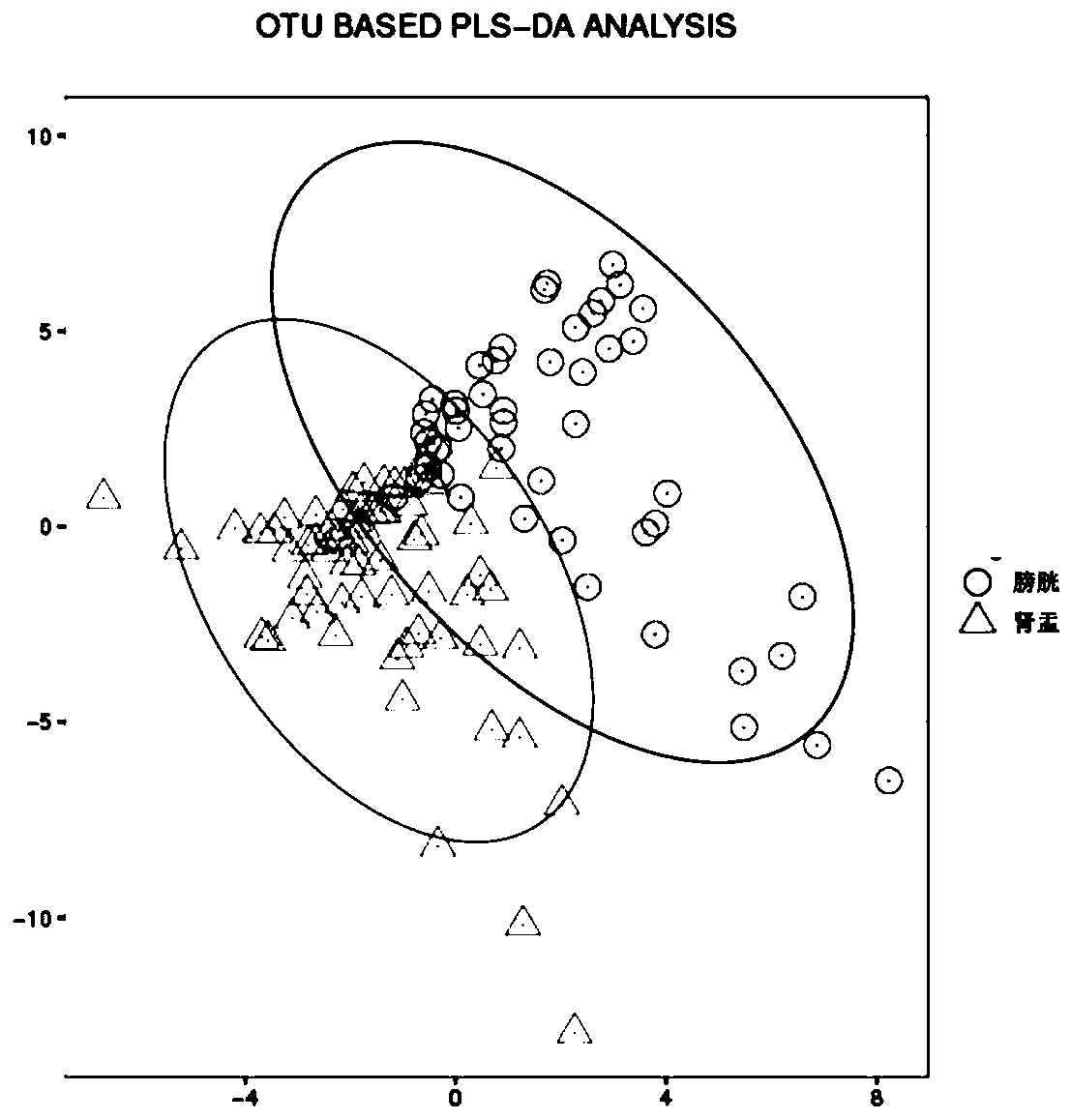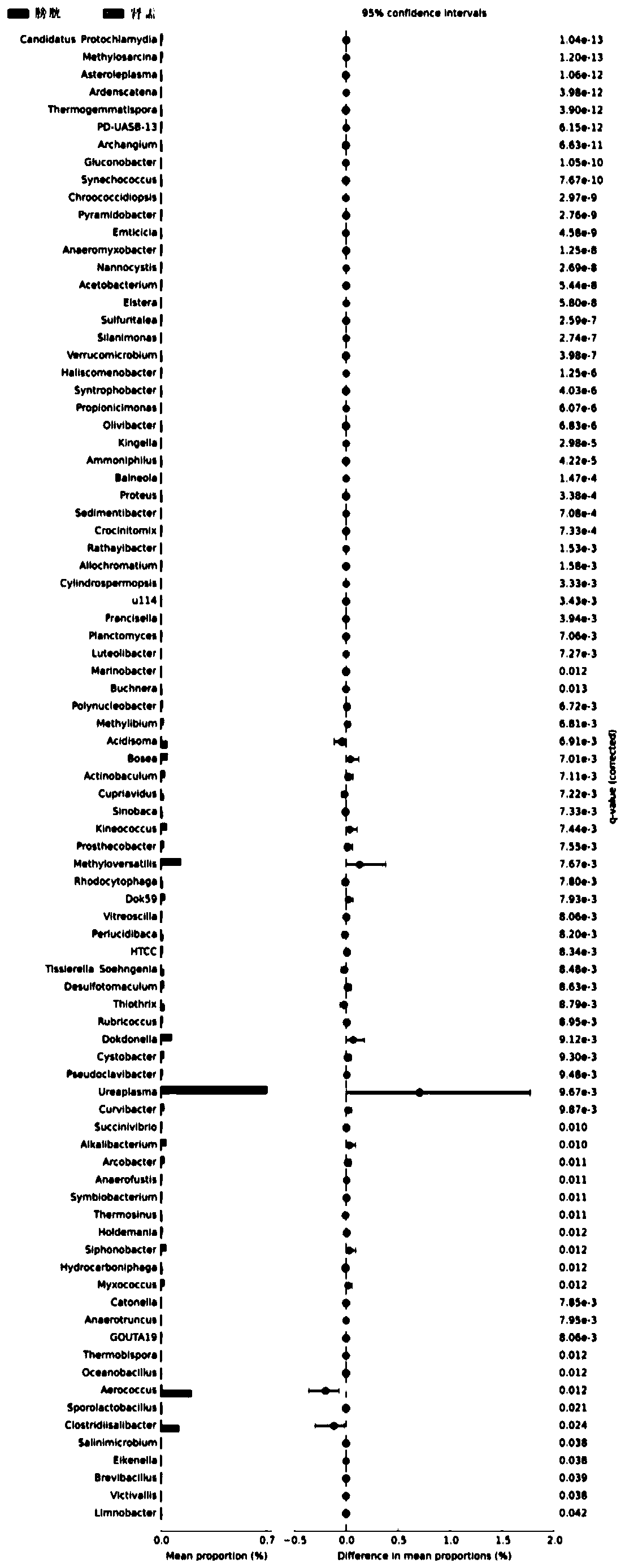Renal pelvis urine microecological specimen collection method and contamination verification method thereof
A technology of specimen collection and microecology, applied in the directions of inoculation and ovulation diagnosis, medical science, surgery, etc., can solve the problem that there is no collection method for obtaining renal pelvis urine microecological specimens, and achieve the effect of accurate judgment and high sample accuracy.
- Summary
- Abstract
- Description
- Claims
- Application Information
AI Technical Summary
Problems solved by technology
Method used
Image
Examples
Embodiment 1
[0029] Collection methods of renal pelvis urine microecological specimens
[0030] 1. After the patient loses consciousness under general anesthesia, use povidone iodine to disinfect the patient's perineum and external urethral opening;
[0031] 2. Insert the ureteroscope into the bladder, take out 3mL of urine, and mark it as "bladder";
[0032] 3. Use a ureteroscope to empty all the remaining urine in the bladder;
[0033] 4. Pour iodophor into the bladder for sterilization, and observe under the ureteroscope whether the bladder is filled with iodophor, suck it out after it is full, and infuse it continuously for 3 times. The method of increasing culture is to cultivate iodine perfusate;
[0034] The expansion culture method is as follows:
[0035] (1) Inoculate 0.1mL povidone-iodine perfusion solution on sheep blood plate, chocolate plate, polymyxin plate and nalidixic acid plate respectively by 4-section line method, and inoculate them in 5% CO 2 Cultivate in an incuba...
Embodiment 2
[0042] Example 2. Verification of renal pelvis urine microecology
[0043] After extracting bacterial DNA from the samples, 16S rDNA sequencing was performed on the renal pelvis and bladder urine samples. Next, the following bioinformatics analysis methods were used to compare the differences in the urinary microecology of the renal pelvis and bladder,
[0044] 1. LefSe analysis
[0045] According to the taxonomic composition, linear discriminant analysis is performed on the samples according to different grouping conditions to find out the communities or species that have a significant difference in the division of samples. From the analysis results, it can be seen that the microecological structure of urine from the renal pelvis is different from that of the bladder. from figure 1It can be seen that the relative abundance of Methylocystaceae, Campylobacterales, Epsilonproteobacteria, Pseudomonadales, Pseudomonadaceae, Pseudomonas, Gammaproteobacteria, Gardnerella, Clostri...
PUM
 Login to View More
Login to View More Abstract
Description
Claims
Application Information
 Login to View More
Login to View More - R&D
- Intellectual Property
- Life Sciences
- Materials
- Tech Scout
- Unparalleled Data Quality
- Higher Quality Content
- 60% Fewer Hallucinations
Browse by: Latest US Patents, China's latest patents, Technical Efficacy Thesaurus, Application Domain, Technology Topic, Popular Technical Reports.
© 2025 PatSnap. All rights reserved.Legal|Privacy policy|Modern Slavery Act Transparency Statement|Sitemap|About US| Contact US: help@patsnap.com



